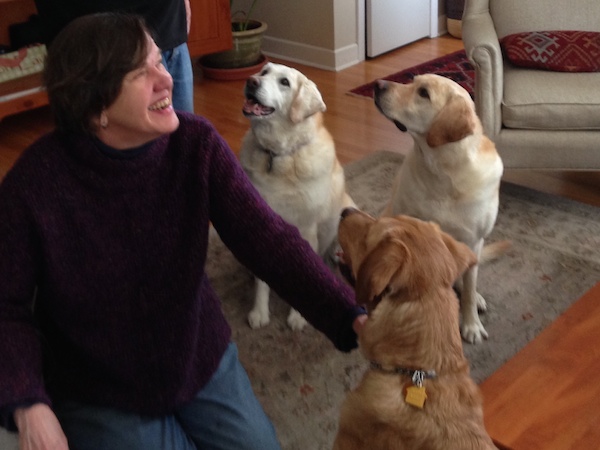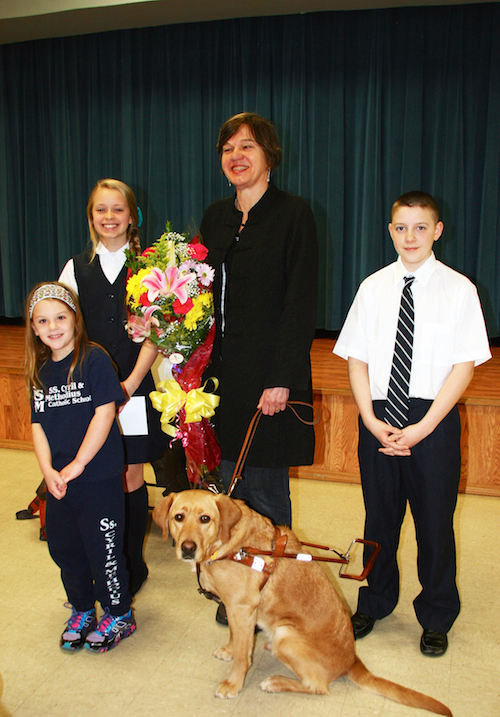My writer’s group met last Tuesday, and when we got to talking about editing I brought up a part from my published memoir, Long Time, No See as an example of the value of good editors.
It’s been a while since I read that book, so after the meeting I dug up the excerpt to read it again. When I read to the last line I thought, gee whiz, this same part could work as a (somewhat unlikely!) Valentine’s Day blog post, too!
But first, the editing part. Before University of Illinois Press published Long Time, No See they had a couple editors go over my manuscript. One checked the medical information, the other copyedited and suggested literary changes, and, surprise, surprise, I discovered I actually enjoy being edited. Those University of Illinois Press editors would ask me to choose the exact word to describe something, and that would force me to put myself back into a situation and really think hard about what it felt like at the time. Not always easy, but very therapeutic.
In my rough draft, I wrote a scene where the retina specialist examines my eyes after all the surgeries and breaks the news to us. The day was July 25, 1985, just three days short of our one-year wedding anniversary. The doctor tells us I’ll never see again, we listen, and then we walk out of the office and head to White Sox Park for a baseball game.
The editors read my version and absolutely insisted that I tell my readers what was going through my head when we found out my blindness was permanent. I didn’t exactly want to describe that time of my life in detail: doing so would force me to put myself back in that room, hearing that bad news again. I did it, though, and writing that scene turned out to be GREAT therapy. I had to think. When I was told I’d never see again, was I disappointed? Angry? Sad? Scared? The answer is here, in that excerpt from Long Time, No See (University of Illinois Press, 2003):
“I’m afraid there’s nothing else we can do,” he said in a tone I recognized from his final report on my left eye.
All I could think to ask was, “Can I lift my head up now?”He said I could. Thankful for at least that, I raised my head for the first time in over a month. I was struck by a sudden feeling of freedom and relief. No more lasers, no more operations, no more weekly visits to Chicago, no more worrying whether or not this all was going to work. We’d been at this for nearly a year; now it was finally over. I swiveled my head as if to look around. I saw nothing.
Mike talked to the doctor, asking sensible questions, I suppose. Turning toward their voices, I asked if this was really it, if we’d really exhausted the possibilities. “I’m a religious man,” the doctor answered, “and in the religion I follow we believe in miracles. I believe God has cured all sorts of ailments. This could happen with you, but there’s nothing else I can do for you medically.”
We stood up to leave. I reached out for the doctor’s hand. He clasped mine with both of his, and I thanked him for all he’d done. He was shaking. I felt sorry for him; I would’ve liked to tell him we were going to be all right.
The White Sox were in town that day. Going to a ballgame after learning I’d be blind for the rest of my life was probably a strange thing to do, but it beat heading home and sitting on our pitiful second-hand couch and wondering where to turn next.
The White Sox were having a rotten year. There were maybe 8,000 people in the stands; Floyd Banister pitched, the Sox lost. But it was strangely pleasant, sitting next to Mike with my head up, not giving a thought to eyes or surgery. We each had a bratwurst and a beer. Between bites and gulps and giving me play by play, Mike bantered with other fans, cursing the underachievers on the team. I laughed at Nancy Faust, the Sox organist—she’s famous for picking songs that play on player’s names. Mike marveled at the endurance of Carlton Fisk, and we both wondered out loud why every time we went to a game, that bum Banister was pitching.

Wedding day, July 28, 1984. We’re headed for our 30th this year.
The three-hour ride home was quiet. Once there, we found ourselves sitting on our miserable couch, as we’d feared, holding hands, trying to imagine how we’d cope. Our only decision that night was to go to sleep. Our bed felt wonderful. I was home for good. Despite everything, a powerful relief came over me, a sense of security, such a change from how I’d felt during those months in my hospital bed. And I realized right away that sight isn’t needed under the covers.
-
00



